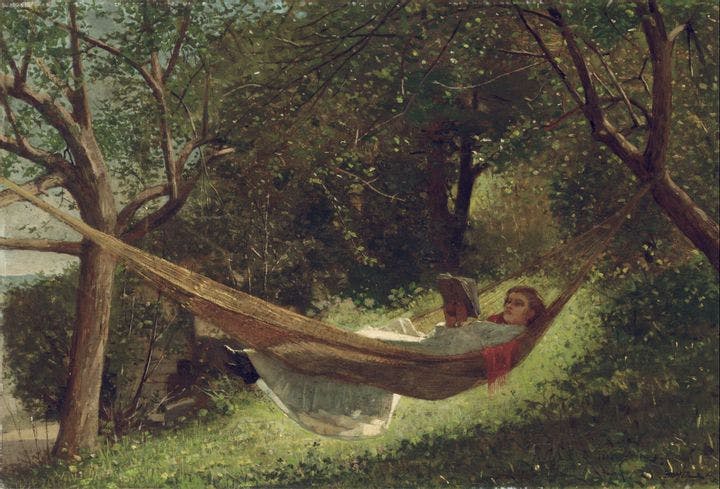Fall 2008
What's American About American Art?
– The Wilson Quarterly
John Updike's ruminations about American artists and their need to "confront the viewer with something vitally actual, beyond illusion."
When it comes to mapping the visible world, American artists tend to stay faithful in some essential way to the concrete reality of the things they paint, says Pulitzer Prize–winning novelist John Updike. He sees defining examples of this American “bias toward the empirical” in the work of the Boston-born titans John Singleton Copley (1738–1815) and Winslow Homer (1836–1910).
Working in isolation from the European art world in colonial Boston, Copley developed a portrait style that represented his subjects plainly and without flattery while rendering their clothes and other material objects with magical detail. In 1765, when Copley submitted a portrait of his half-brother Henry Pelham, Boy With a Squirrel, to the annual exhibition of the Society of Artists in London, Benjamin West, an American master of the English style, wrote to inform him that the London art world recognized Copley’s raw talent but found his painting too “liney.”
Art critic Barbara Novak suggested at a 1966 Copley retrospective that this liney sensibility stemmed from a “conceptual bias” rooted in Puritanism. The great preacher Jonathan Edwards had stressed “the clarity of ‘things’” as “manifestations God makes of Himself in His works.” The material world is a reflection of God himself, and, in the minds of Copley and other American painters, capturing its reality is their essential task. Lines deliver the facts of an image and create a world that is not conceptual or illusory, but lavishly literal.
By 1776, Copley was living in London, where he embraced the romantic “theatricality” of the English style, illustrating the contrast between the American and European visions. In his most famous picture from this period, The Death of Major Peirson (1783), there is but a single drop of blood on the felled man.
Working a century after Copley, Winslow Homer sought to observe and imitate the world around him, as surely as Copley did but through different means. If Copley was “liney,” then Homer was “painterly,” ending his career as the “wettest of artists,” dabbling in watercolors and applying “palette-knife slatherings of raw white” to canvases of wild seascapes. He endeavored to paint the subjects of his work just as they lived in nature. A frothy wave would not become a tame, thin coat of paint in Homer’s hands, but a layer filled with impasto scribbles, dashes, and loops.
Updike sees this opposition between “lininess” and painterliness throughout the history of American art, down to Roy Lichtenstein, with his sharp-edged pop art, and Andy Warhol, the devoted colorist. Yet all of these artists were committed to the clarity of things, according to Updike. “All, it might be said, employ highly personal techniques to confront the viewer with something vitally actual, beyond illusion.”
* * *
THE SOURCE: “The Clarity of Things” by John Updike, in The New York Review of Books, June 26, 2008.
Image courtesy of Wikimedia Commons
